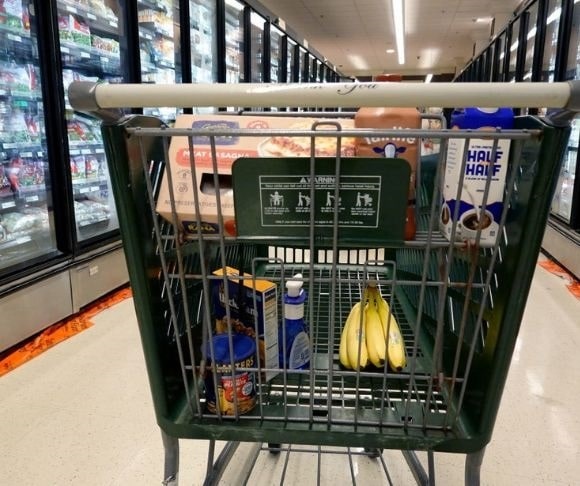Business journalists declared Christmas in July. The financial markets opened champagne and the folks at the White House screamed like a bunch of bobby-soxers. But what’s all the commotion about? The June consumer price index (CPI) was released on July 12, and the monthly inflation barometer in America slowed to the lowest level since March 2021, suggesting that Bidenomics has been fighting harder than President Joe Biden climbing up a flight of stairs. But while it might be tempting to pull a George W. Bush and hang a mission-accomplished banner on the USS Abraham Lincoln, the reality of inflation is quite different than what is being reported by the press.
Inflation – Dead or Alive?
The US annual inflation rate eased to 3% in June, down from 4% in May and below economists’ expectations of 3.1%, according to the Bureau of Labor Statistics (BLS). The core CPI, which removes the volatile energy and food components, slowed to 4.8%, down from 5.3% and under the consensus estimate of 5%. Both inflation gauges rose 0.2% on a month-over-month basis. Most of the leading CPI indexes continued to slow in the 12 months ending in June, led by a significant easing of food prices (+5.7%), energy (-16.7%), new vehicles (+1.3%), used cars and trucks (-5.2%), and medical care services (-0.8%). Of course, shelter, a lagging indicator by up to 12 months, remained elevated at 7.8%.
Despite the mainstream business media singing “Happy Days Are Here Again,” a few inconvenient truths about the latest inflation data might put a damper on these festivities.
First, the base effect significantly affected the latest inflation figures. This economics term references the impact of the previous year’s rate and how it can distort the current level. So, for instance, it would seem that price growth has decelerated since the annual CPI was 9.1% in June 2022 and 3% in June 2023. However, the public is not given accurate figures because annualized headline inflation rates are calculated against an elevated baseline, whether energy or food. That said, these base effects could diminish over time, which is already seen in some of the upcoming inflation forecasts, including the Federal Reserve Bank of Cleveland’s Nowcasting model, which anticipates slight upticks in the CPI and core inflation.
Second, inflation is still rising. The current administration and the media carelessly throw around the term “falling” when discussing inflation. But this is inaccurate because the annual CPI is growing at a 3% clip. Overall prices continue to be higher than they were before the coronavirus pandemic. Put simply, the growth rate has not turned negative.
Third, even if you take the year-over-year percentages out of the equation, many goods and services are witnessing renewed price pressures when examining them on a month-over-month basis. This is most notable in energy, beef, and many services. The energy index rose 0.6%, including a 1% increase in gasoline and a 0.9% jump in electricity. Unsurprisingly, beef prices have been trending higher for several consecutive months, and they could still be on an upward trajectory over the next year amid growing demand, scarce supplies, and slowing production. Services inflation accounts for about 57% of the monthly CPI data and remains sticky and stubborn. This part of the consumer price index has eased from a year ago, but many different services have started rising, from motor vehicle maintenance and repair (+1.3%) to financial services (+1.6%).

(Photo by Joe Raedle/Getty Images)
Lastly, the modern-day CPI is still not an accurate measurement. The US government changed the methodology in the 1980s and 1990s to make it friendlier for public policymakers. Before 1983, the BLS included housing prices in the CPI but was eliminated because the data crunchers considered a roof over your head an investment. In the mid-1990s, Washington determined that the index overestimated inflation by as much as 1.6 percentage points and possessed plenty of upward biases. In other words, the way living costs were gauged perturbed politicians, so they had to alter the CPI to make themselves look better.
Back to 2%
In recent weeks, there has been a noticeable shift in language from Federal Reserve officials. The newest talking point from several regional central bank presidents is that inflation needs to return to the 2% target rate at a sustainable and long-term pace. In other words, they want to see inflation run at or below 2% for a lot longer than just a month or two. This explains why Fed Chair Jerome Powell stated that he does not see inflation touching this target level for another couple of years. Indeed, the CPI could reach 2% by the year’s end, but will it stay there for an extended period? Many economists argue that it is unlikely. For now, students of Bidenomics say the administration’s economic program – whatever it is – is successfully combating inflation. In reality, the verdict will be out until June 2024.




